The term "dunkelflaute" refers to a period when energy demand is high while electricity production is low, as in winter on windless days with little sunshine. The term is used to emphasize the importance of planning and diversification in the design of our energy mix.
Concept of the game
In Dunkelflaute, players try to build a resilient energy park to guarantee sufficient electricity production for each round. To achieve this, players will need to invest wisely in different energy sources and allocate their budgets to maximize production while limiting risk.
Overview of a tile
Each player's energy park is made up of tiles, each comprising several elements :
- House slots are represented by dotted rectangles at the top of each tile.
-
Dice slots are represented by squares with rounded edges in the center of each tile.
- Most of these slots have constraints that limit the values of the dice that can be placed there.
- Below these slots is the benefit players can earn by filling them.
Tiles provide two types of benefits :
- Energy points are indicated by a value preceded by a lightning bolt. Tiles that produce energy points can be recognized by their wave-shaped border.
- Additional dice are indicated by arrows leaving the slot. A text also indicates the value of the dice obtained. Tiles for earning new dice are indicated by a dotted border.

|
This tile can hold up to 3 houses. It also has a condition that can only be met with 3 dice whose sum must equal 6. If this condition is met, it will generate 6 energy points. |

|
This tile can only host one house. It also has 3 slots with no conditions. Each of these slots can be used to roll a new die. |
Game board overview
During the game, each player has an individual board consisting of two sections :

-
The park : this is the large central rectangle delimited by dotted borders. This is where players place their tiles during the game.
-
The notepad : this is the table at the top right of the individual game board. This area contains various informations :
- The cost of houses, indicated on the labels in the first column.
- Your score, indicated by the framed values preceded by a lightning bolt in the second column.
- Your budget for the next round, indicated by the three circled values in the third column.
Set-up
-
Each player chooses a color and places the corresponding set of pieces in front of them: 1 personal board, 6 disk (numbered 1 to 6) and 12 houses.
-
Place all the tiles face-down, shuffle them, then collect the tiles in a face-down pile. Then distribute 2 tiles to each player and place them face-up in their respective parks, on their personal boards.
-
Players then place their respective houses on the ten corresponding slots in the notepad, on their personal boards. They then place the remaining 2 houses on each of the two tiles in their park.
-
Each player places the 1, 2 and 3 discs of their respective color in front of them, then places the remaining discs behind their park, forming a reserve.
-
Finally, a first player is chosen at random and given the first player token.
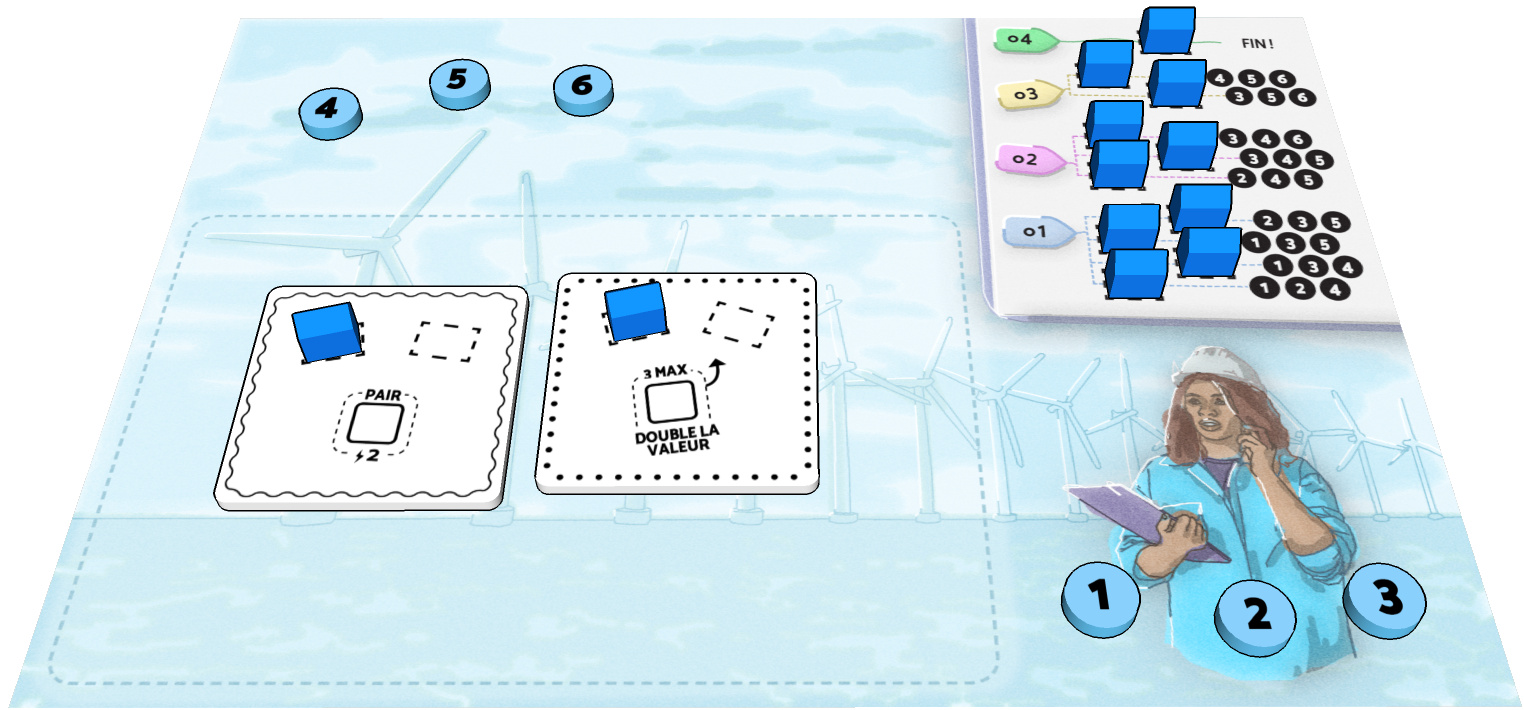
set-up example for the blue player
Game sequence
The game is played in a succession of rounds, themselves divided into 4 phases: bidding, spending, production and balance.
Auction phase
In this stage, players choose a new tile to add to their park.
First, four tiles are drawn from the face-down pile and placed face-up in the center of the table. Then, starting with the first player, and continuing with the player to his left, players take turns placing one of the discs they have in front of them (discs 1, 2 or 3 at the start of the game) on one of these four tiles.
On his turn, a player can choose between two options.
- Place the disc of his choice on a tile not yet containing another disc.
- Place the disc of his choice on a tile already containing another disc. In this case, the player's disc must be of a higher value than the disc already present. The weaker disc then returns to its owner's hand.
Players whose disc is already placed on a tile pass on their turn, while others can choose a new placement for one of their discs.
Players take turns until each player has a disc on a tile. They then each retrieve the tile on which their token was placed and place it in their park, then return the used disc to their reserve.
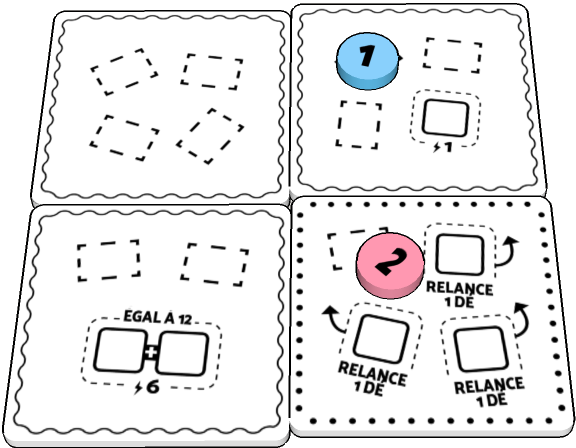
|
The blue player decides to place his disc of value 1 on the top right tile. He was not allowed to place his disc on the bottom-right tile, as another disc of a higher value was already there. |
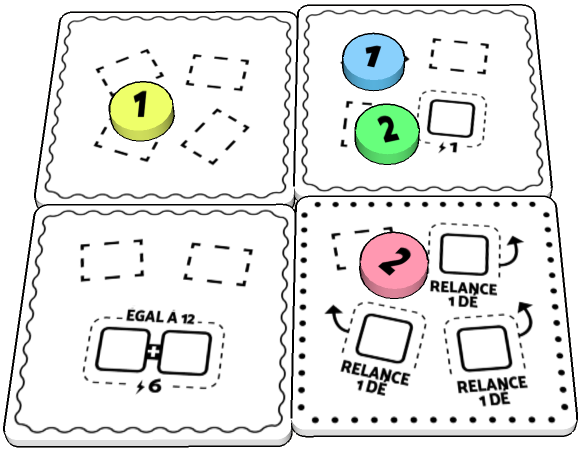
|
The yellow player then places his disc on the top-left tile, and the green player places his disc on the top-right tile. He can do this because his disc is of a higher value than that of the blue player. The blue player must then retrieve his disc and place it elsewhere on his turn. |
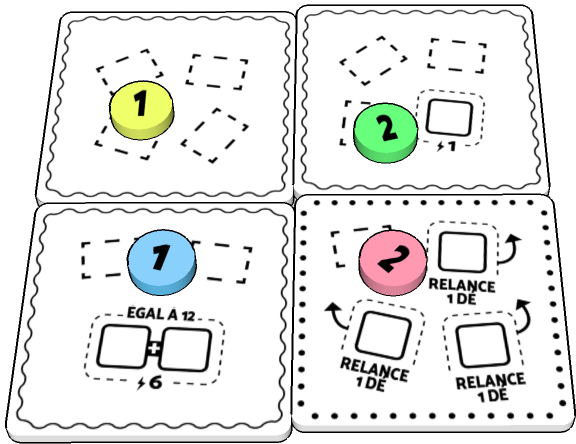
|
It is now the blue player's turn again. He could choose to place a disc with a value greater than 2 so that he can position himself on the same tile and dislodge the green disc, but instead he chooses to place his disc with a value of 1 on the bottom-left tile. All the players' disks have now been placed, so they can each pick up the tile they've chosen and place their respective disks in their reserves. |
Tile replacement
Players can only have a maximum of 6 tiles in their park. When players exceed this number, they must replace one of their previously acquired tiles with the one they have chosen this turn. The replaced tile is then discarded and set aside for the rest of the game.
It is not permitted to discard the tile acquired during this turn.
Houses present on the replaced tile are moved to other tiles in the park, as well as to the new tile. If there are not enough slots available on the tiles, the remaining houses are returned to the highest available slots on the notepad.
Spending phase
In this stage, each player decides to use one of his two remaining discs to acquire houses, and uses the second to acquire dice. This stage, and the rest of the round, can be played simultaneously.
-
Houses are purchased from each player's individual reserve, on the notepad.
The cost of each house is indicated on the notepad in the left-hand column. The first four houses cost 1, the next three cost 2, and so on.
Each player chooses a disc, then removes as many houses as the disc's value allows. The houses acquired are then placed on the available spaces on the tiles in the players' parks.
Players can only buy the lowest available houses in the pool, so it's not possible to buy a house with a value of 2 if a house with a value of 1 is still available.
If a player doesn't have enough available slots in his park, he only buys the houses he can place, leaving the others in their place in the notebook.
-
Dice are purchased from the general reserve. The cost of the dice is always 1, so players take as many dice as the value shown on the last disc in their hand. These dice can only be used this round, and cannot be kept for the following round.

The blue player used his value 1 disc in the previous step, leaving him with his value 2 and 3 discs. He chooses to use his value 3 disc to acquire the first 3 houses in his notebook, each costing 1. He can then remove them from his notebook and place them on these tiles, then use his value 2 disc to obtain 2 dice from the general reserve.
Production phase
In this stage, each player rolls all the dice he or she purchased in the previous stage, then places them in the available slots on their tiles to maximize their score.
The placement of the dice must respect the conditions imposed by the tiles, and the value of the dice can never be changed by the players.
When a dice placement allows a new dice to be retrieved, it must be taken from the general supply, while the dice that enabled this operation remains in its placement, thus condemning it for the rest of the turn.
This stage ends when all players have finished positioning their dice, including those obtained from their park tiles.
Clarifications
- A house does not have to be on a tile for a player to benefit from its dice slots.
- All dotted boxes must be filled to satisfy a condition.
- You can change the placement of dice in your park on tiles that produce energy points (wave outline), but dice placements on tiles that produce new dice (dotted outline) are permanent for this round.
- A player may choose not to use all his dice, in which case he returns the remaining dice to the general reserve.
Balance phase
In this stage, the players each announce the score they have achieved this round, then draw the 3 discs of their color corresponding to their score.
To calculate their score, the players each count how many houses they have managed to power this round. 1 energy point powers 1 house. A player's score cannot exceed the number of houses in his park.
Referring to the notepad on their individual game board, players can then collect the 3 discs corresponding to their score. If a player supplies less than 3 houses, he/she gets the 3 lowest discs: 1, 2 and 3.
Players then remove all the dice from their park and return them to the general supply.
The first player token is passed to the next player, and the next round may begin.
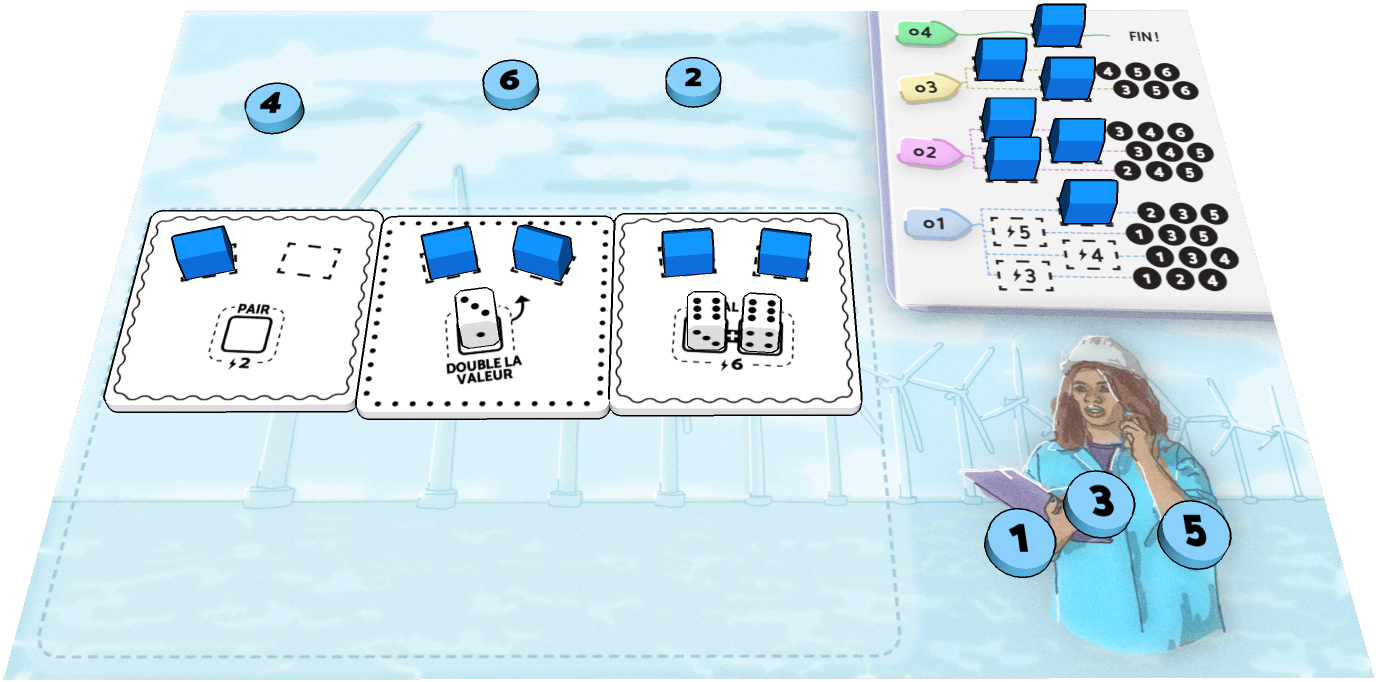
The blue player had one die with a value of 6 and one die with a value of 3. He chooses to place his die with a value of 3 on his second tile. The blue player then places this new die and his remaining die on his third tile. With this last placement, the player fulfills the condition of obtaining a sum of 12, thus obtaining 6 energy points. With his 6 points, the player can power the 5 houses in his park, so he wins a total of 5 points this round. The blue player can then pick up the discs with values of 1, 3 and 5, as indicated on the notepad next to the score 5.
Game ending
The game ends when a player buys his last house, or when fewer than four tiles remain in the deck at the end of a round. The round is then played to its end, and the player with the highest score wins the game.
Tie breaker
If more than one player achieves the same score, they each take another 6 dice from the general supply and repeat the production stage. This time, the player who produces the most energy points is declared the winner. Scores are no longer limited by the number of houses in the park.
In the event of a tie, players share the victory.
Designer's note
This project originated from the desire to share a playful management experience to a wide audience.
The dice placement mechanism on modular tiles results from the experiments with laser cutting from various fablabs in Île-de-France. This shaping allowed me to imagine a game around the idea of risk management, with a tension between tile configurations that are more or less effective, but also more or less vulnerable to the randomness of dice. The solution of numbered discs of different values allowed me to borrow the auction/expenses/income structure common to many economic games, synthesizing it into simple and impactful choices.
During the development of the game, I aimed for it to be particularly permissive: there are many winning tile configurations, a certain level of planning is possible without it being a prerequisite to play, and all players have the opportunity to win until the end of the game. I susect that some seasoned players may regret a lack of lasting consequences during their game. If so, I would invite them to play the games that Dunkelflaute draws its inspiration from : Age of Steam, Amun Re, Power Grid, Yunnan, etc.
Dice slot specifications
It is not necessary to know the different types of dice to start playing. The table below can be consulted as the game progresses, at the start of each round.
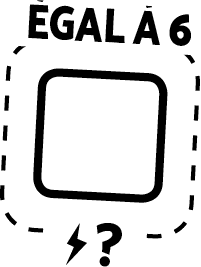
|
If the die equals 6, wait for the balance step, then roll a die from the reserve and receive its result in energy points. |
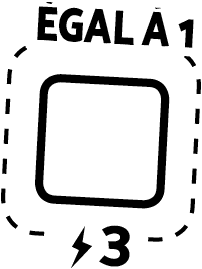
|
If the die equals 1, get 3 energy points. |
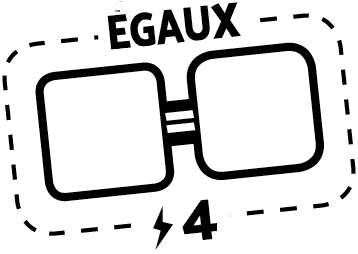
|
If the 2 dice have the same value, get 4 energy points. |
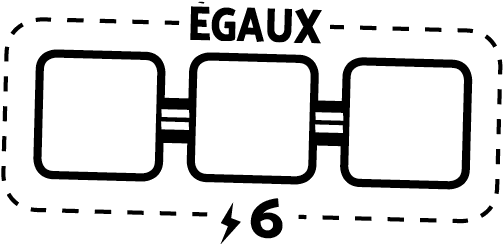
|
If all 3 dice have the same value, get 6 energy points. |
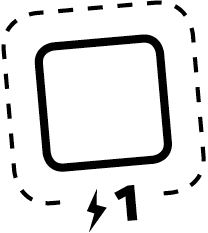
|
For any die, get 1 energy point. |

|
If the die is even, get 2 energy points. |
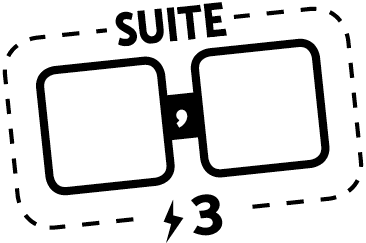
|
If the values of the 2 dice form a sequence, get 3 energy points. |
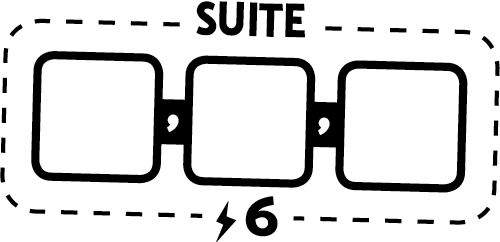
|
If the values of the 3 dice form a sequence, get 6 energy points. |
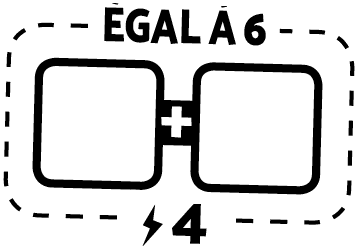
|
If the sum of the 2 dice equals 6, get 4 energy points. |
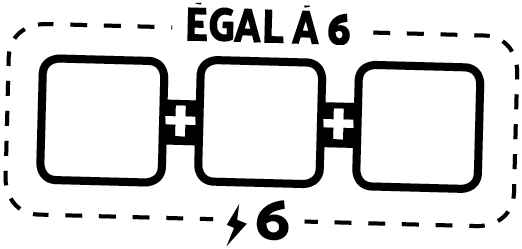
|
If the sum of the 3 dice equals 6, get 6 energy points. |
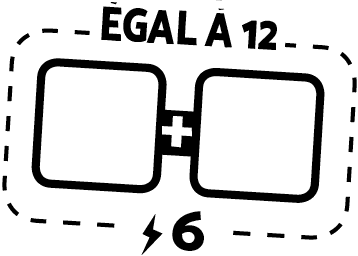
|
If the sum of the 2 dice equals 12, get 4 energy points. |

|
If the sum of the 3 dice equals 12, get 6 energy points. |
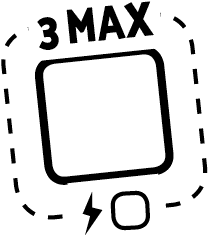
|
If the die is less than or equal to 3, get the number of energy points corresponding to the value of the die. |
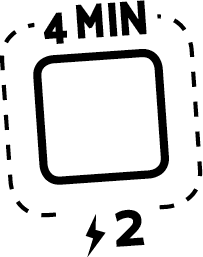
|
If the die is less than or equal to 4, get 2 energy points. |
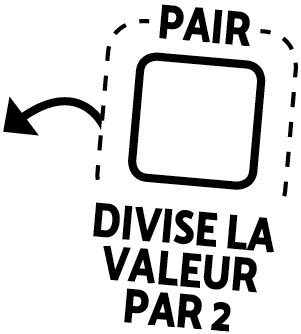
|
If the die is even, get 1 new die with the same value divided by two. |
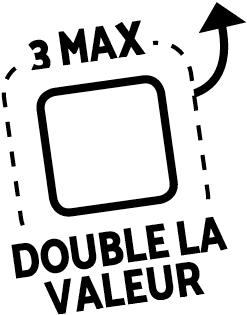
|
If the die is less than or equal to 3, get 1 new die with the same value multiplied by two. |
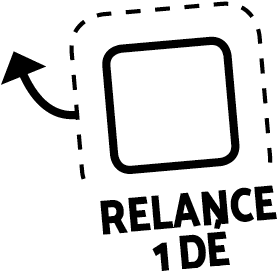
|
For any die, get 1 new die and roll it to determine its value. |
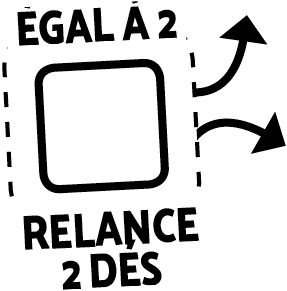
|
If the die is equal to 2, obtain 2 new dice and roll them to determine their value. |
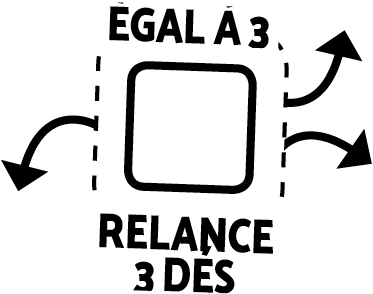
|
If the die equals 3, obtain 3 new dice and roll them to determine their value. |

|
If the die equals 1, obtain 1 new die of the value of your choice. |

|
If the die equals 6, roll 1 new die of any value. |
This game was designed, developed and illustrated by Colin Thil.
Thanks to all the testers : Charles Cailleteau, Sabrina Chamorro, Pierre Bolchini, Ludyvine Bonhomme, Hugo Bonnifait, Manon Galvier, Julien Rodriguez, Gabriel Thil and the students of the game design course at FAN in Rosny-sous-Bois.